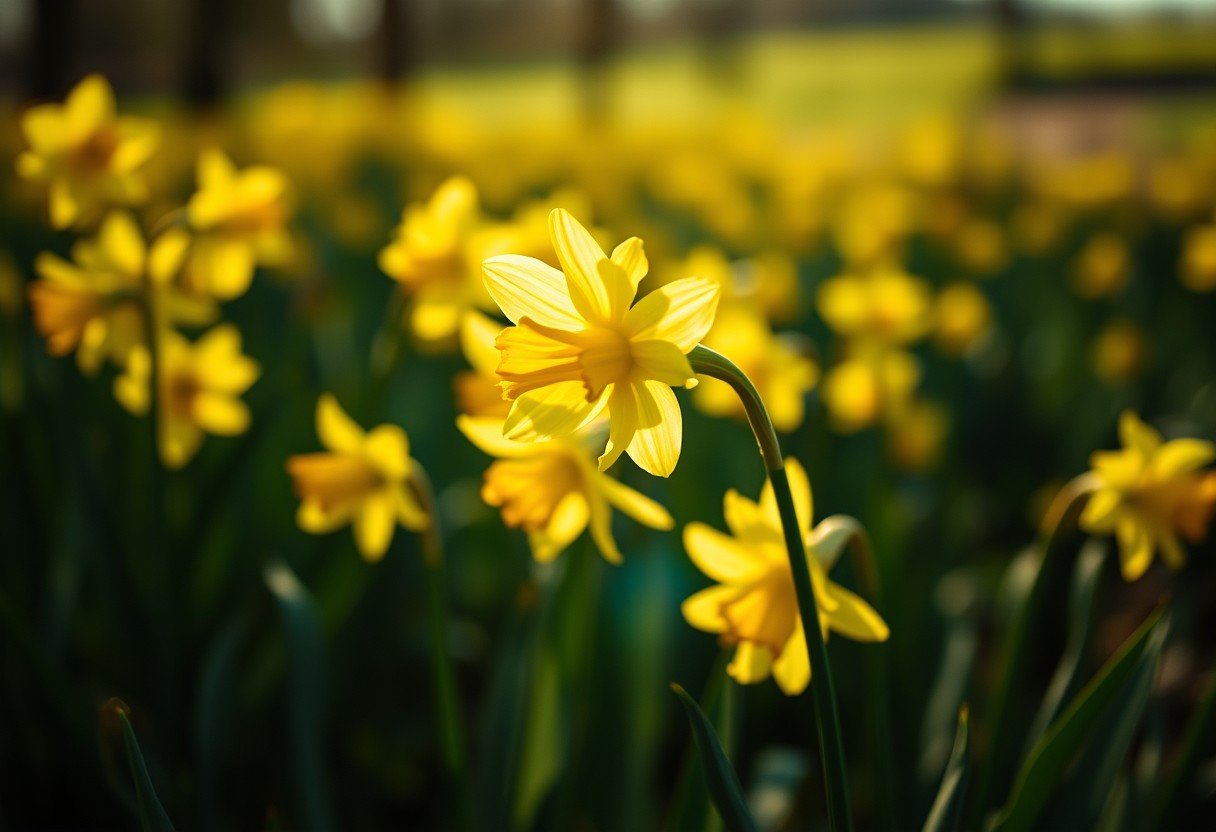This guide explains what assonance is, where it appears in Wordsworth’s I Wandered Lonely As A Cloud, how the O sound works, when the poem was published, who wrote it, and why it matters. You will learn how this sound choice shapes mood, rhythm, and meaning so you can analyze poems with confidence.
What Is Assonance In Wordsworth’s Daffodils
Assonance is the repetition of vowel sounds in nearby words, such as the open O sound in the phrase “a host, of golden daffodils.” In this famous lyric, the echo of O links words and smooths the line. It gives the scene a round, flowing feel.
William Wordsworth wrote the poem after a spring walk in the Lake District in 1802. It first appeared in 1807 and was revised in 1815. The setting and sound design work together to paint joy in nature.
The repeated O sound is a clear case of assonance, not alliteration, because a vowel sound repeats inside words rather than a starting consonant.
This simple device is common in English poetry and song. It helps bind images and ideas without heavy rhyme.
Why The O Sound Feels Musical
Open vowel sounds like O are easy to hold and slow the voice. That longer airflow gives the line a calm beat that matches the soft motion of flowers by a lake.
Linguists note that back vowels such as O and U can feel round and warm to listeners. In this poem, that roundness fits the golden color and wide view.
By repeating O, the poet guides your breath and pace, so the scene feels smooth, wide, and bright.
The result is gentle music in plain words, which is a hallmark of Romantic era style.
Assonance Vs Alliteration Vs Consonance
Readers often mix these terms, yet each tool does a different job in sound design. This table sums up the core differences with short examples you can test out loud.
| Device | What Repeats | Short Example | Main Effect |
|---|---|---|---|
| Assonance | Vowel sounds | Cold road home | Soft echo, smooth flow |
| Alliteration | Starting consonants | Wild wind whistles | Punchy beat, sharp focus |
| Consonance | Consonant sounds | Blank trunk bark | Subtle texture, quiet rhyme |
Use the names by asking which sound repeats and where it repeats in the word.
How To Spot Assonance In A Poem
If a line feels smooth and singable, you may be hearing vowel echoes. Train your ear with these simple steps.
- Read the line out loud and stretch the vowels slightly.
- Underline words that share the same vowel sound, like O in host, golden, daffodils.
- Check that consonants do not do the main repeating work.
- Ask how the shared vowel supports mood, pace, or image.
When the same vowel ties key words together, you have found assonance.
With practice, you will hear patterns fast and explain how they lift meaning, not just sound nice.
Emotional Impact And Theme Connection
The O sound supports the poem’s joy in nature. It makes the field feel full, bright, and alive.
As the speaker recalls the scene later at home, the soft echo helps memory feel warm and rich. The sound links the place and the feeling.
Assonance turns simple words into a steady pulse that carries wonder, calm, and delight.
This is why teachers use this poem to model how sound choices deepen theme without complex diction.
Common Misreadings And How To Avoid Them
Some readers mix up the devices or overlook the role of vowels. Clear checks prevent these slips and make your analysis strong.
- Do not call it alliteration when a vowel repeats inside words.
- Do not count spelling; listen for sound, since words like “love” and “move” look alike but sound different.
- Match sound to mood; explain how O adds calm or awe in the scene.
Base your claim on what you hear, then tie that sound effect to the poem’s feeling and image.
This small habit turns a guess into a clear, supportable point in essays and exams.
Practical Uses For Students And Teachers
Students can quote a short phrase and name the device, then explain the effect in one clean sentence. That structure scores well in tests.
Teachers can model think aloud reading and mark vowel links on the board. This shows how sound patterns guide pace and mood.
Pair sound study with context facts such as the 1807 first publication and the Lake District walk in 1802 to give depth without long quotes.
Clubs and readers can try swapping vowels in a line to hear how mood changes. This playful method fixes the idea in memory.
FAQs
What Is The Literary Term For The O Sound In “A Host, Of Golden Daffodils”?
It is assonance, the repetition of a vowel sound in nearby words. In this poem the open O links key words and smooths the rhythm.
How Does Assonance Shape Meaning In I Wandered Lonely As A Cloud?
The shared O sound slows the voice and adds warmth, which supports themes of joy, calm, and wonder in nature. It also helps bind images into one flowing scene.
What Is The Difference Between Assonance And Alliteration?
Assonance repeats vowel sounds inside words, while alliteration repeats starting consonants. Ask which sound repeats and where it repeats in the word to name it correctly.
Why Did Wordsworth Use Simple Sound Patterns Instead Of Complex Rhyme?
He aimed for clear, natural speech that still sings. Sound patterns like assonance add music without heavy rhyme, which fits his focus on plain language and real feeling.
When Was The Daffodils Poem Written And Published?
The walk that inspired it took place in 1802 in the Lake District. The poem appeared in 1807 and was revised in 1815.
How Can I Quickly Prove Assonance In An Essay?
Quote a short phrase, name the shared vowel sound, and state the effect on mood or pace. Keep it to two sentences so your point is clear and strong.







Leave a Comment